Google Sheets -
Types of Cell References

Google Sheets
Types of Cell References


/en/googlespreadsheets/creating-complex-formulas/content/
There are two types of cell references: relative and absolute. Relative and absolute references behave differently when copied and filled to other cells. Relative references change when a formula is copied to another cell. Absolute references, on the other hand, remain constant no matter where they are copied.
Watch the video below to learn how to use relative and absolute references.
By default, all cell references are relative references. When copied across multiple cells, they change based on the relative position of rows and columns. For example, if you copy the formula =A1+B1 from row 1 to row 2, the formula will become =A2+B2. Relative references are especially convenient whenever you need to repeat the same calculation across multiple rows or columns.
In the following example, we want to create a formula that will multiply each item's price by the quantity. Instead of creating a new formula for each row, we can create a single formula in cell D4 and then copy it to the other rows. We'll use relative references so the formula calculates the total for each item correctly.
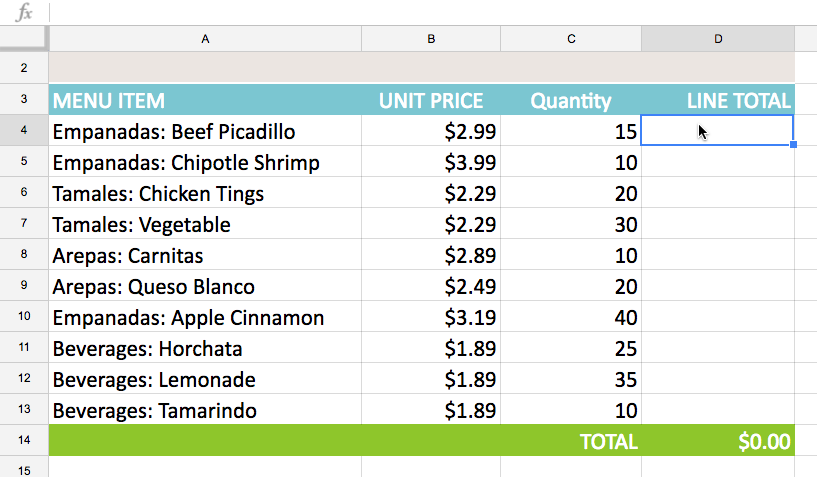
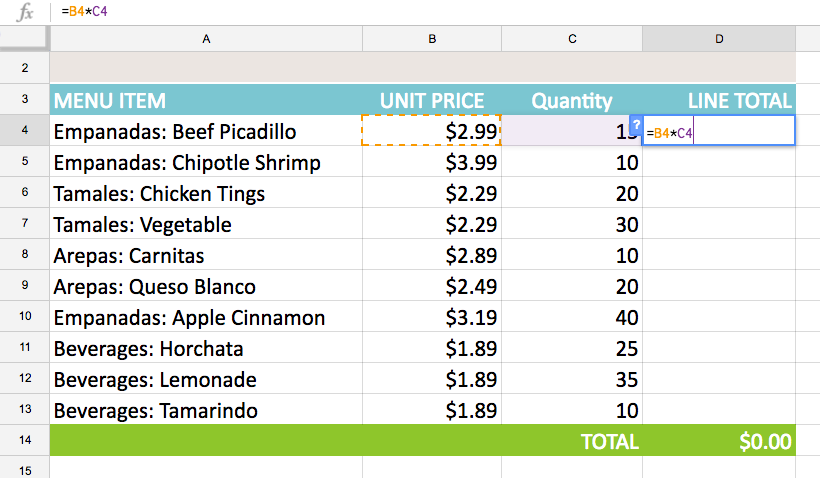
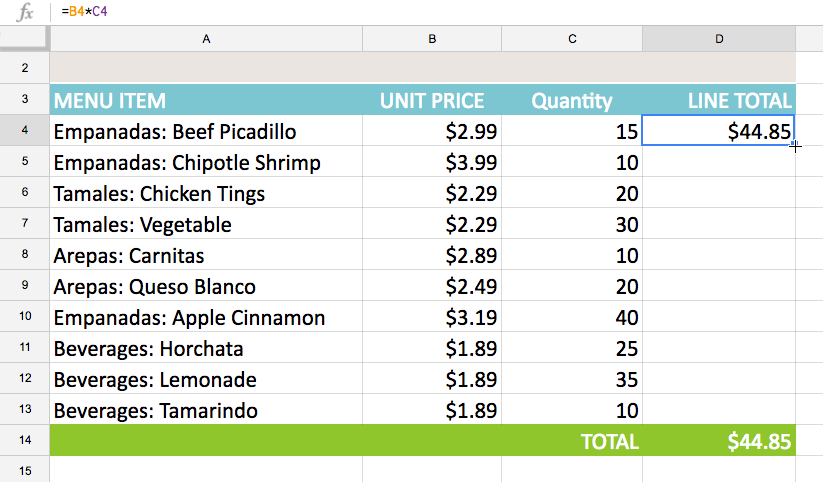

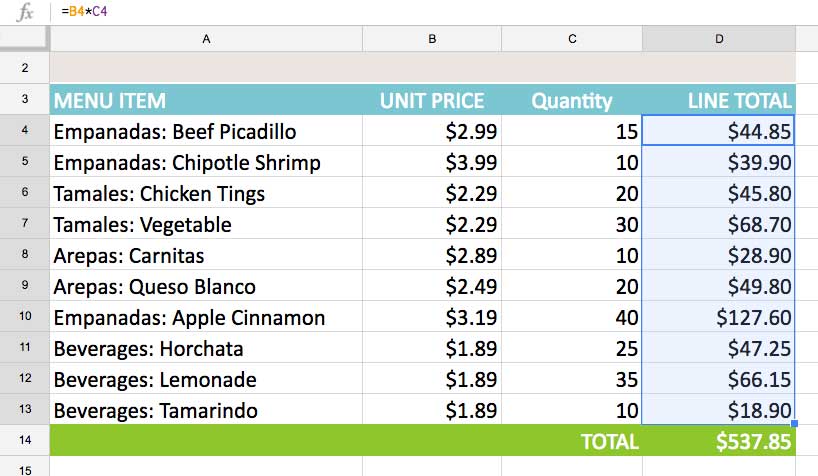
You can double-click the filled cells to check their formulas for accuracy. The relative cell references should be different for each cell, depending on their rows.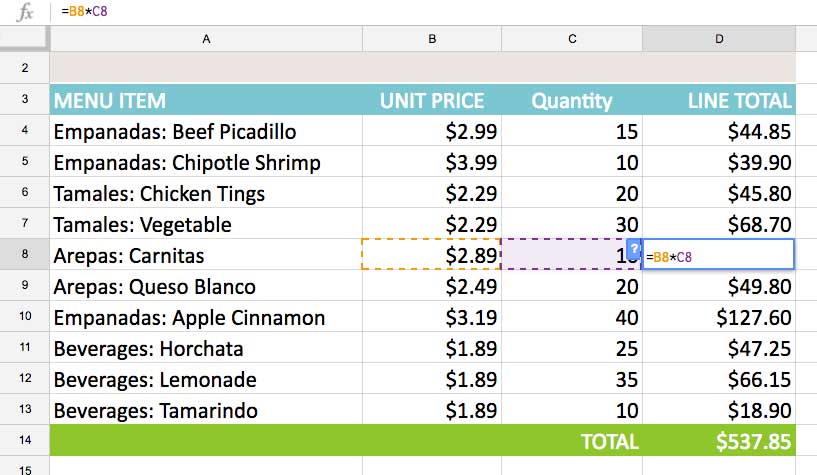
There may be times when you do not want a cell reference to change when copying or filling cells. You can use an absolute reference to keep a row and/or column constant in the formula.
An absolute reference is designated in the formula by the addition of a dollar sign ($). It can precede the column reference, the row reference, or both.

You will most likely use the $A$2 format when creating formulas that contain absolute references. The other two formats are used much less often.
In the example below, we're going to use cell E2 (which contains the tax rate at 7.5%) to calculate the sales tax for each item in column D. To make sure the reference to the tax rate stays constant—even when the formula is copied and filled to other cells—we'll need to make cell $E$2 an absolute reference.



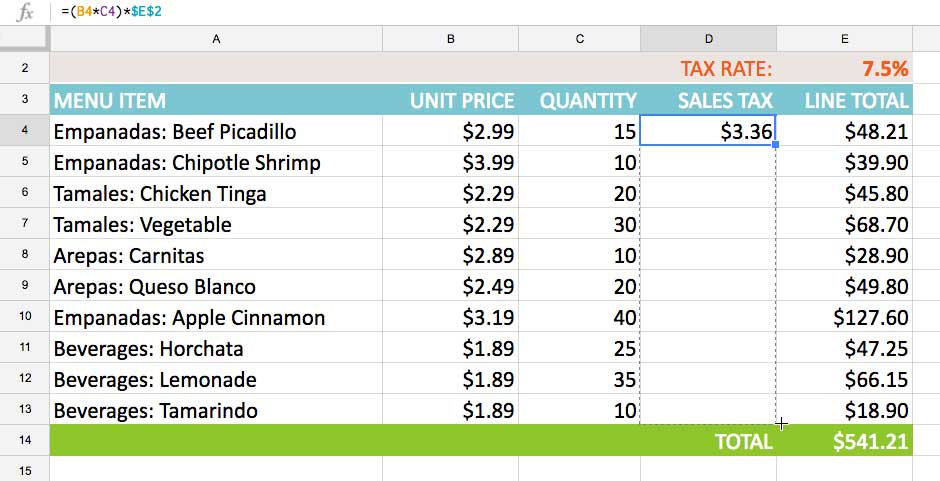
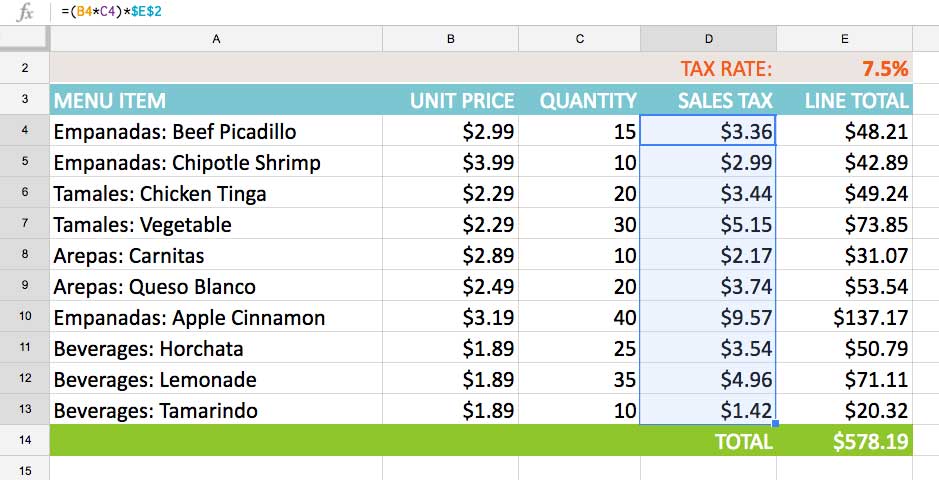
You can double-click the filled cells to check their formulas for accuracy. The absolute reference should be the same for each cell, while the other references are relative to the cell's row.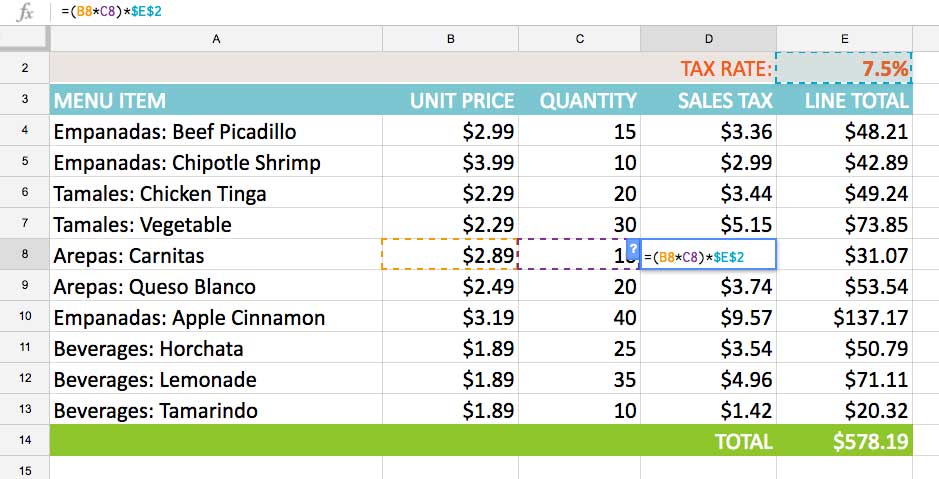
Be sure to include the dollar sign ($) whenever you're making an absolute reference across multiple cells. Without the dollar sign, Google Sheets will interpret it as a relative reference, producing an incorrect result when copied to other cells.
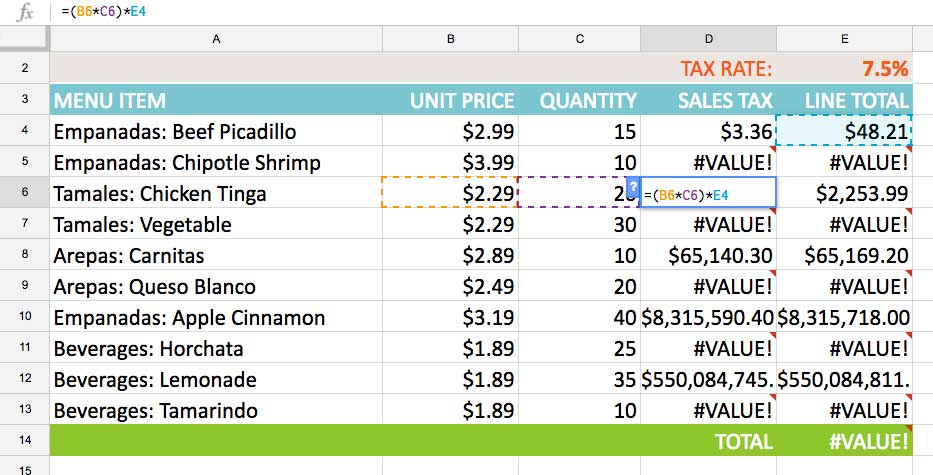
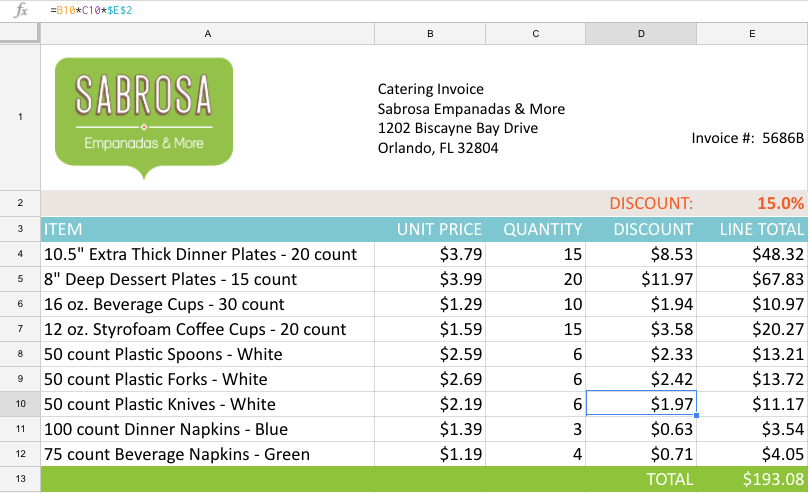
/en/googlespreadsheets/working-with-functions/content/